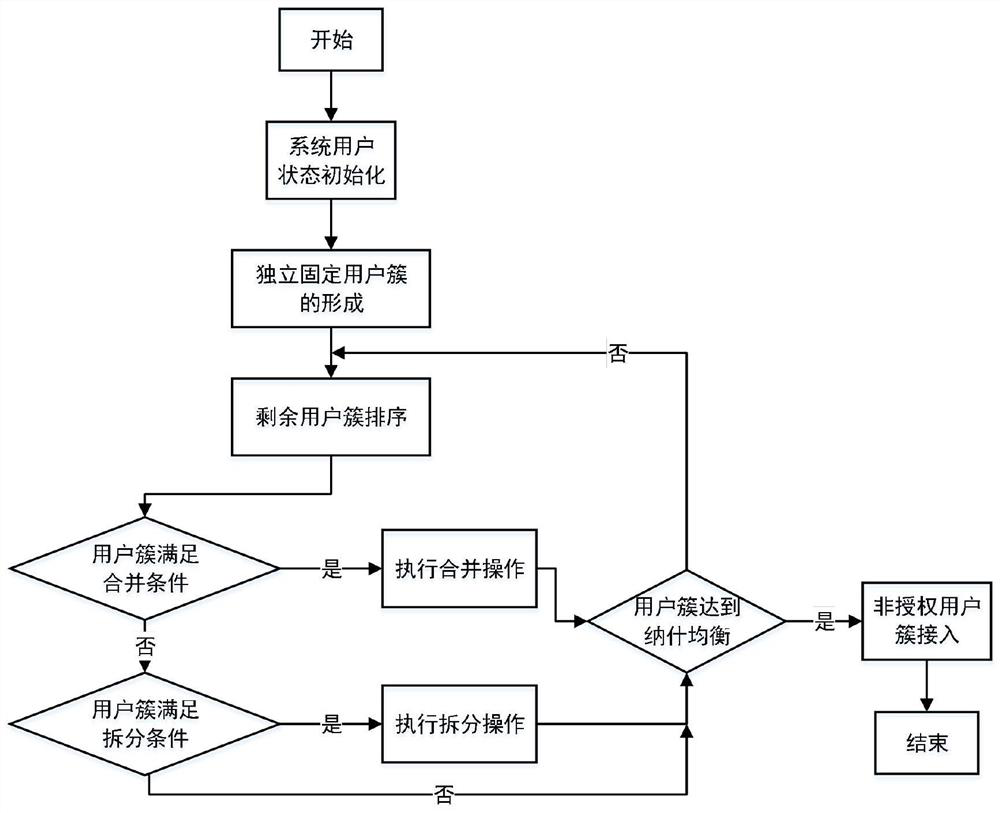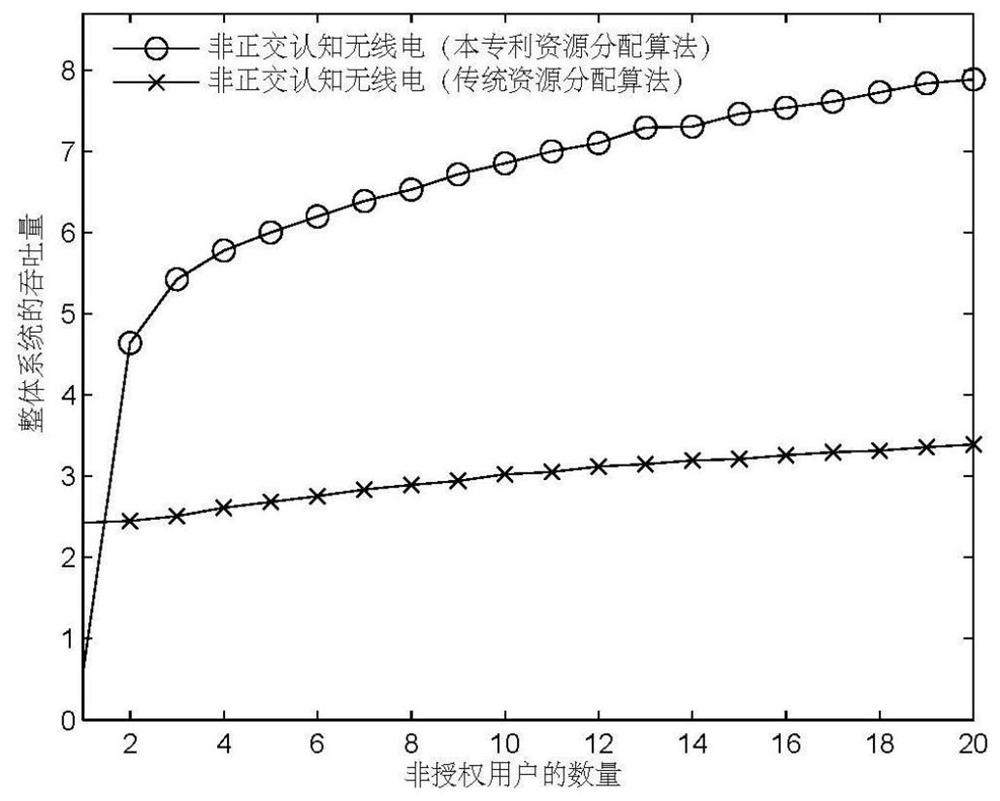Resource Allocation Method in Non-orthogonal Cognitive Radio Networks Based on Game Theory
A cognitive radio and resource allocation technology, which is applied in the field of resource allocation in non-orthogonal cognitive radio networks based on game theory, can solve the problem of scarce spectrum resource allocation and other problems, and achieves improved system throughput, transmission characteristics, and speed. maximized effect
- Summary
- Abstract
- Description
- Claims
- Application Information
AI Technical Summary
Problems solved by technology
Method used
Image
Examples
Embodiment
[0043] Effect of the present invention can be further illustrated by simulation:
[0044] 1. Simulation conditions: Assume that the cognitive radio network includes 1 authorized user and 20 unauthorized users. The transmission power of authorized users is 15dB, the transmission power of unlicensed users is 20dB, and the reference requirement coefficient for primary users to allow cognitive users to occupy personal frequency bands is 0.8.
[0045] 2. Simulation content: In the underlay cognitive wireless network, the spectrum resource allocation method of the present invention and other random allocation methods are simulated and compared under the premise of different numbers of users. The results are as follows figure 2 . figure 2 In , the vertical axis is "the overall rate of the system", indicating the total rate of the entire network; the horizontal axis is "the number of unauthorized users".
[0046] Depend on figure 2 The simulation results show that, in the case o...
PUM
 Login to View More
Login to View More Abstract
Description
Claims
Application Information
 Login to View More
Login to View More - R&D
- Intellectual Property
- Life Sciences
- Materials
- Tech Scout
- Unparalleled Data Quality
- Higher Quality Content
- 60% Fewer Hallucinations
Browse by: Latest US Patents, China's latest patents, Technical Efficacy Thesaurus, Application Domain, Technology Topic, Popular Technical Reports.
© 2025 PatSnap. All rights reserved.Legal|Privacy policy|Modern Slavery Act Transparency Statement|Sitemap|About US| Contact US: help@patsnap.com



